The Lake District
27 July 2003 - Sunkenkirk Stone Circle
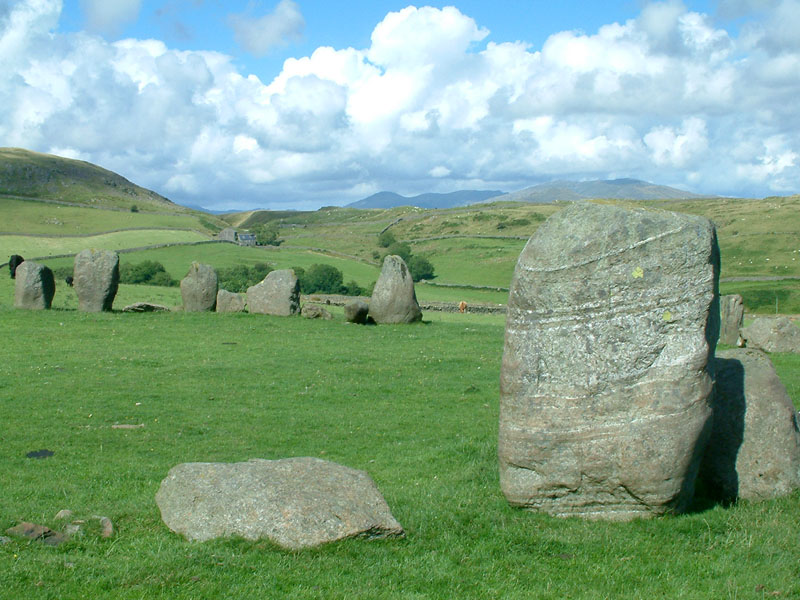
Sunkenkirk is a well preserved stone circle near Swinside Farm on Knott Moor,
with 55 of the original 60 stone slabs.
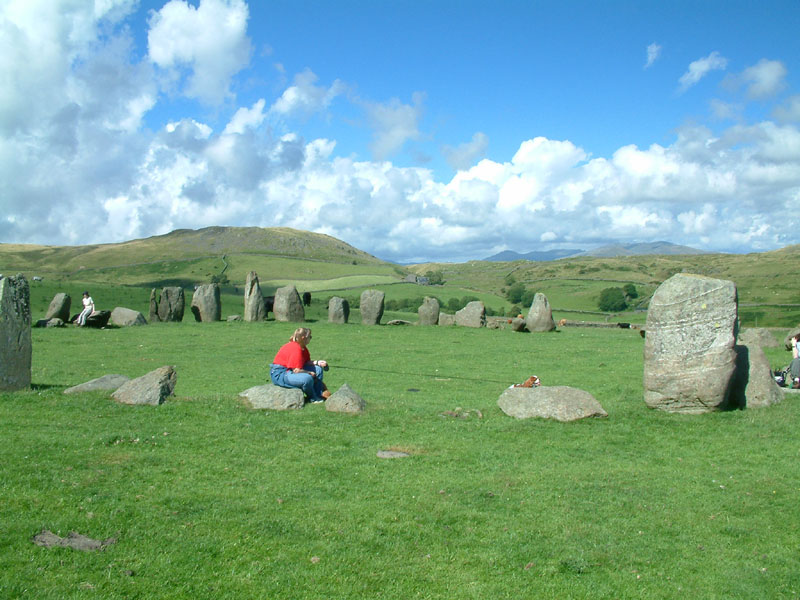
Lucy and the stone circle on this beautiful afternoon
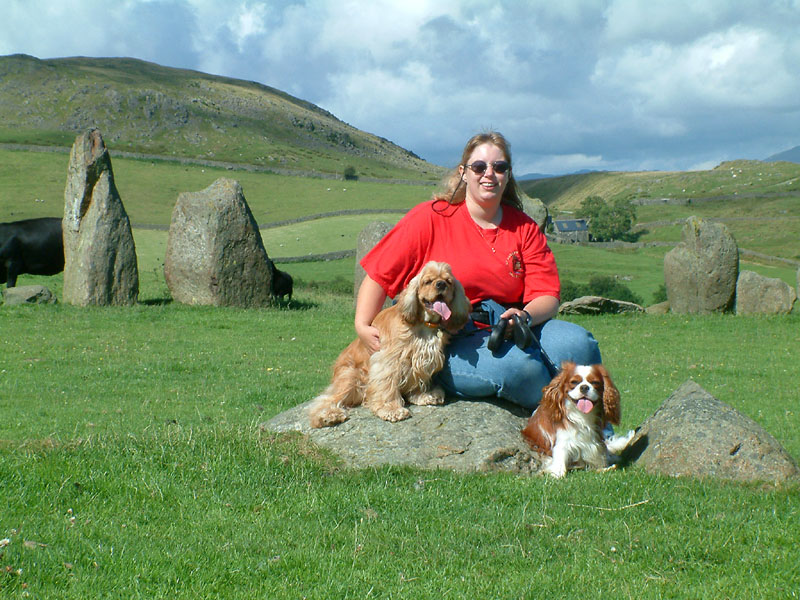
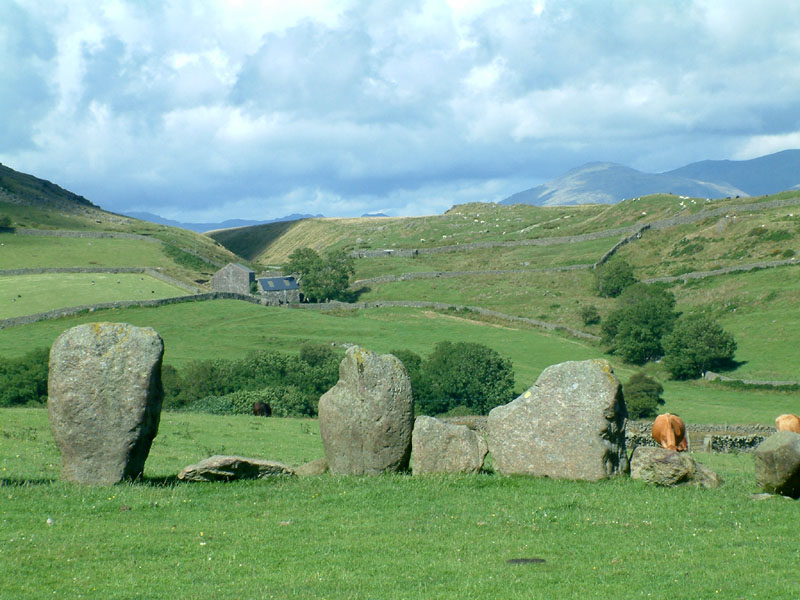
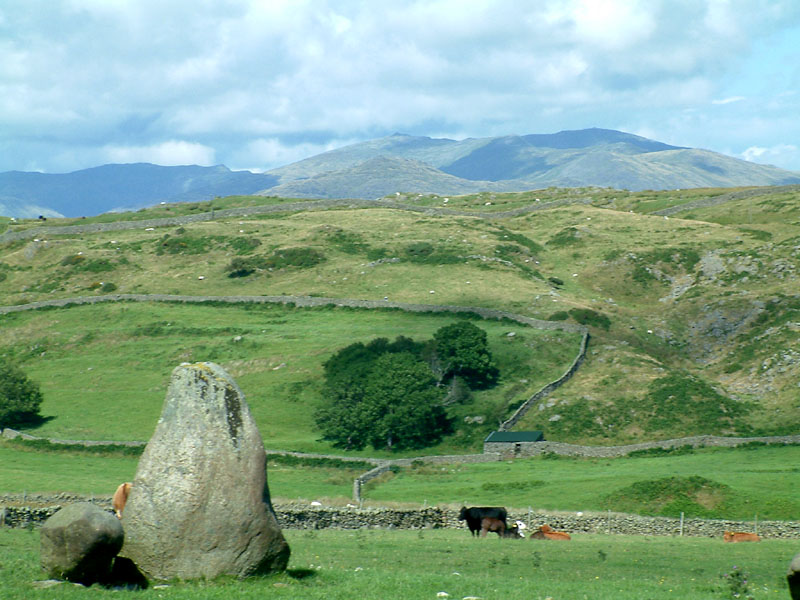
The Coniston Fells away in the distance
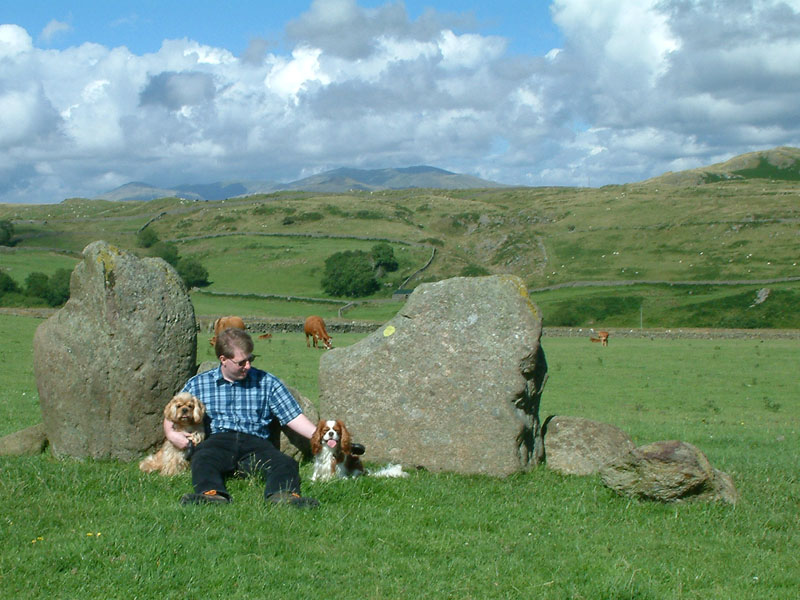
Stephen and the dogs
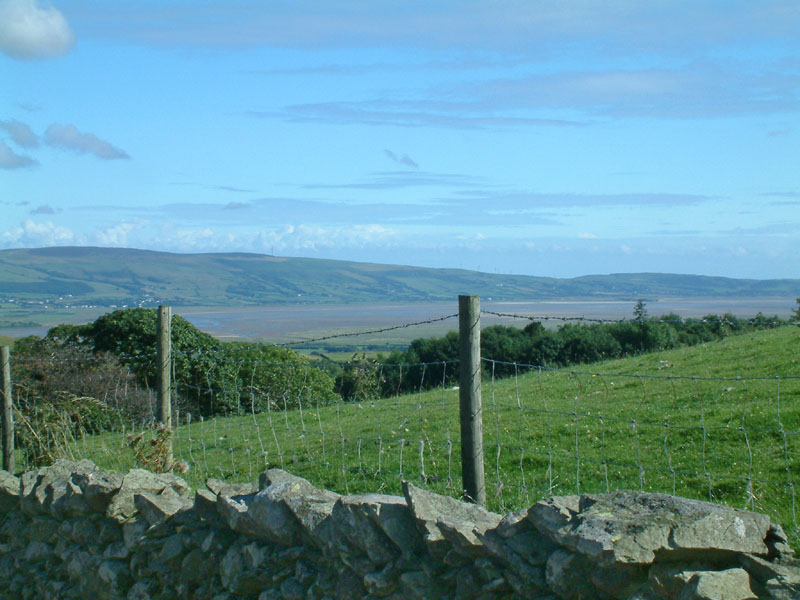
The Duddon estuary and Kirby Fell beyond

The track back to the car

From the road onto Thwaites Fell, the big fells of south-western Lakeland, from
the Wasdale fells on the left past the Eskdale fells to the Coniston fells.
Click photo for a larger version.
28 July 2003 - Claife Heights
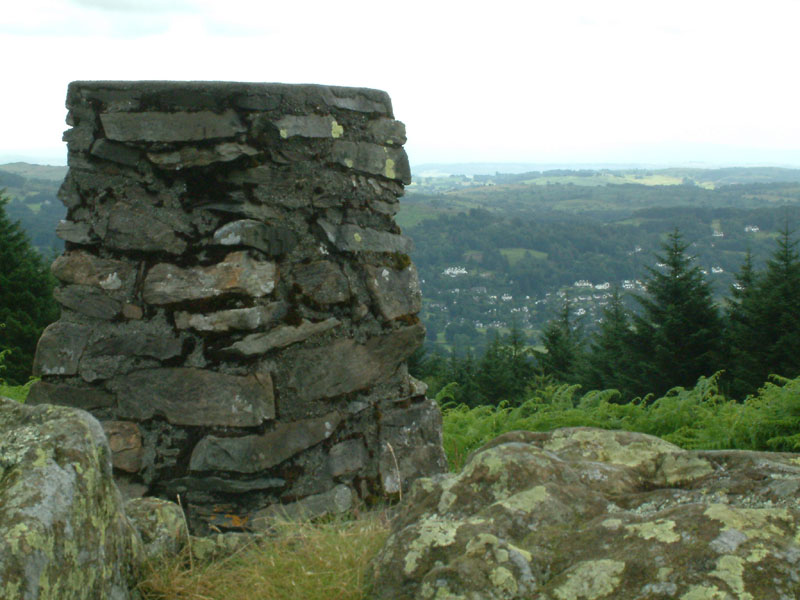
The trig point on the top of Claife Heights (270m or 886ft above sea level).
This is the top of the high ground between Windermere and Hawkshead. The walk
from near the Windermere ferry is very varied, with a dark and gloomy last
section through dense coniferous forest.
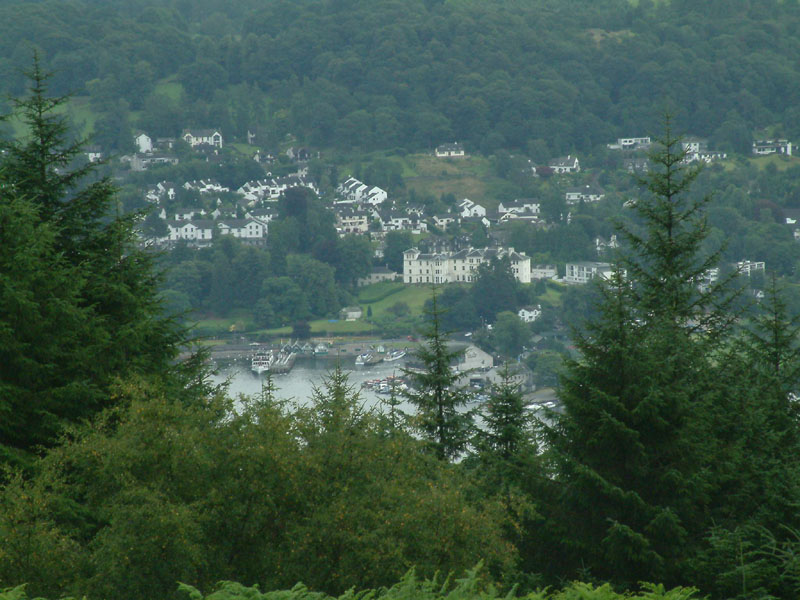
Looking through the trees to Bowness
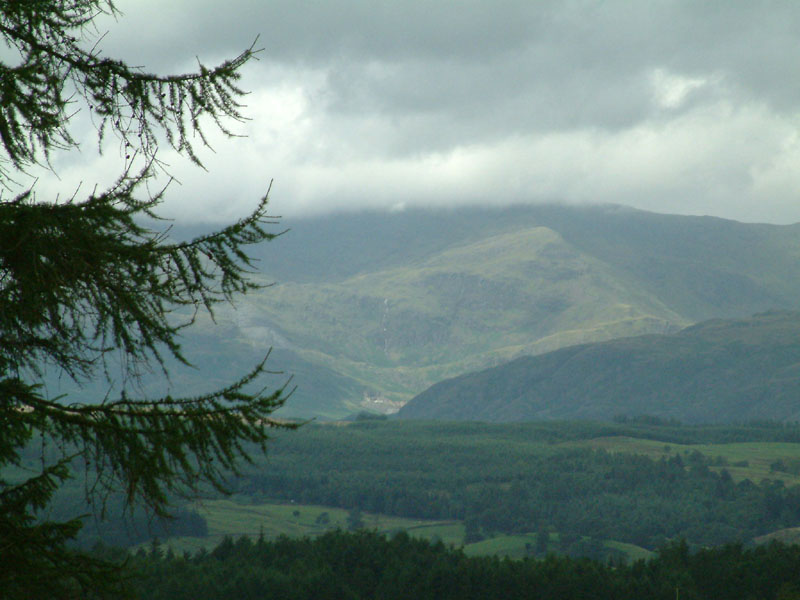
Looking across (out of sight) Esthwaite Water and Monk Coniston Moor to The Old
Man of Coniston and Brim Fell
with their heads in the clouds.
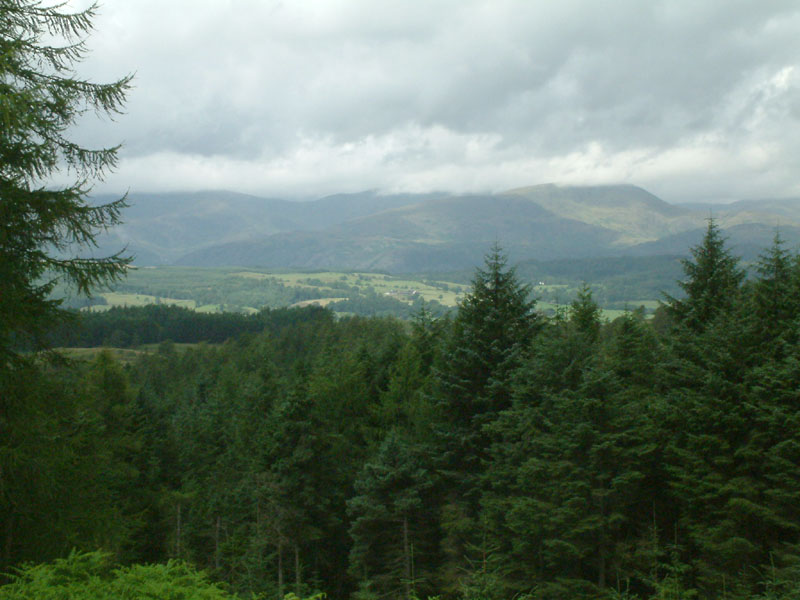
And a broader view with the Coniston Fells extending across to Wetherlam

On the descent, Claife Station.
"This station is now sufficiently pointed out by the elegant building lately
erected thereon ... which renders it one of the most delightful places near the
lake."
Thomas West's classic Guide to the Lakes, quoted above, first appeared in 1778
and described several viewpoints or "stations" where tourists could enjoy the
best views of the Lake District landscape. In those days tourists were
encouraged to appreciate the formal qualities of landscapes and to apply
aesthetic values.
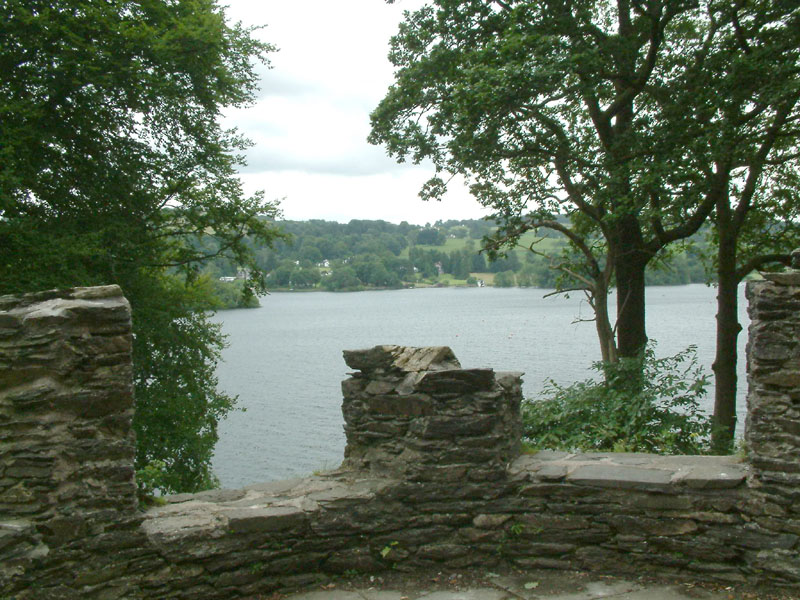
Claife Station was built in the 1790s and was at its most fashionable in the
1830s and 1840s, when it was mentioned in every guidebook and was used for
parties and dances as well as for landscape appreciation.
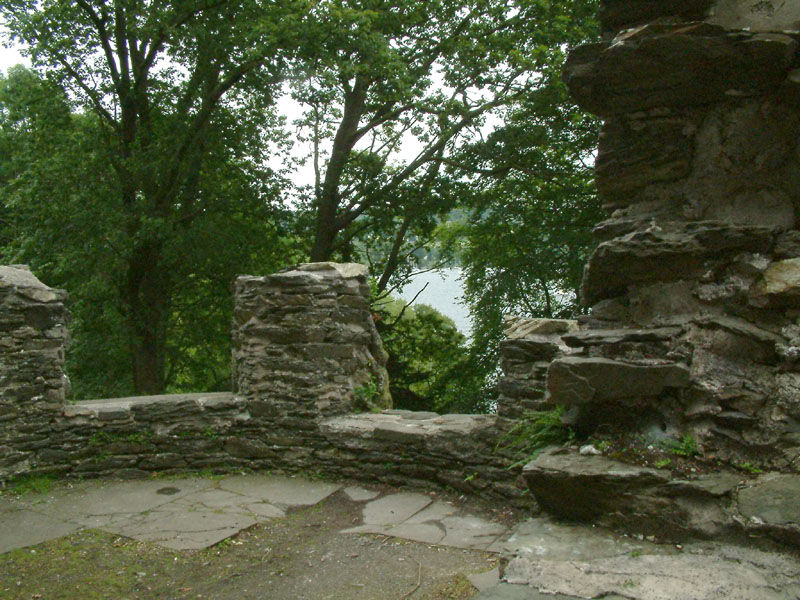
The windows of the drawing room were the Station's most celebrated feature; each
had a different aspect, viewed through different coloured glass to enhance
variations in weather and seasons. The tinted glass in these windows was
intended to recreate lighting effects in the landscape. Yellow represented
summer, orange was for autumn, light green for spring, and light blue for
winter. There was also a dark blue for moonlight and a lilac tint to give the
impression of a thunderstorm.
28 July 2003 - Kirkby Moor (Lowick High Common)
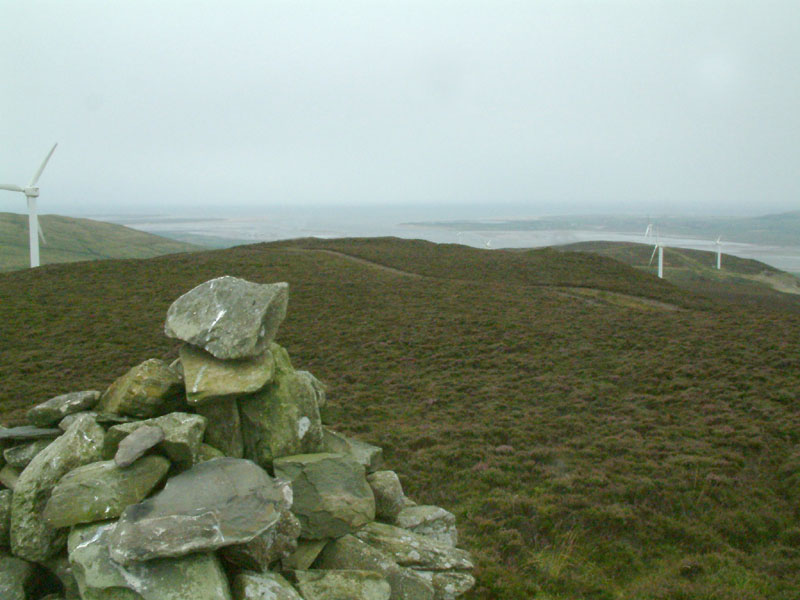
On a very gloomy afternoon, a view from Kirby Moor (334m or 1096ft above sea
level) and its windmills to the sea

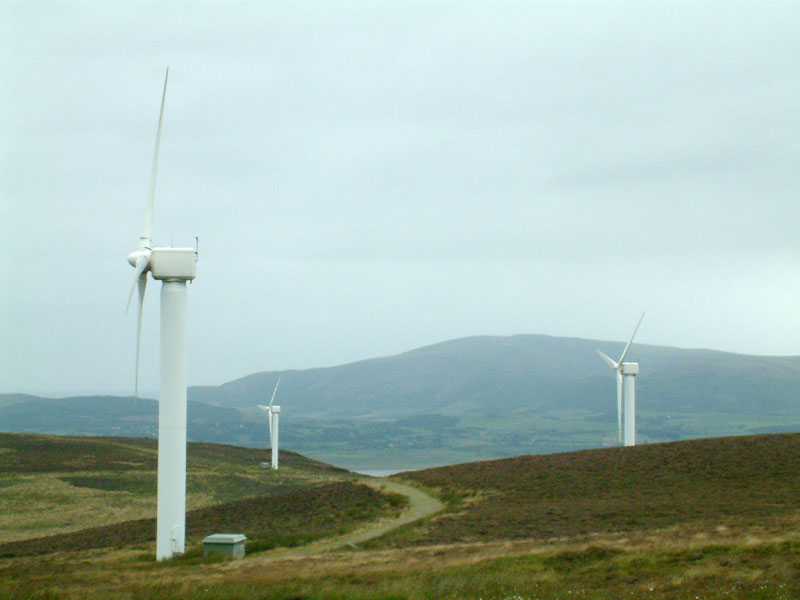
Black Combe from Kirby Moor
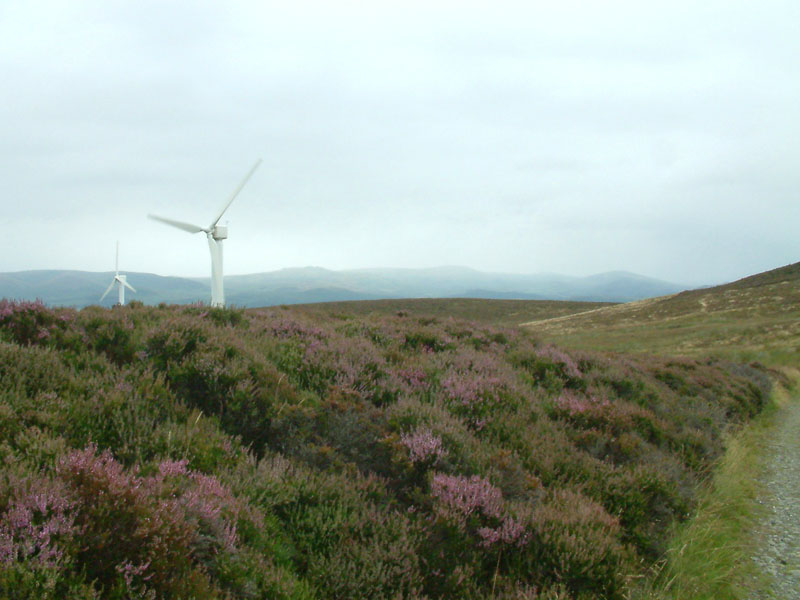
Heather and windmills on the Kirby Slate Road
Lake District holiday, July 2003
|
|